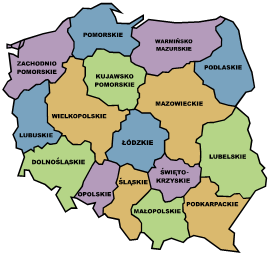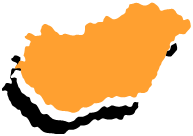 We Think Europe
We Think EuropeAutor
Living in Europe
od Selina Weiler, 2010
What do the Polish and Hungarians have in common?



Poland and Hungary are since the 1 May 2004 parts of the 10 new EU states.
Reasons for their entry into the EU were in addition to its economic benefits, also its historical and cultural associations with the other members of the European Union. The fear of the big neighbor Russia was also a major reason for their entry.
Every six months, the Chair of the Council of the European Union, also known as the Presidency, exchange between the member states. Since 2007, the Presidency of the Council is exercised by a form of a so-called “Triopräsidentenschaft. This means that the Council shall be exercised for a period of 18 months by a group of three member countries. In 2011, it is going to be the turn of Poland and Hungary.
The satellite states of Poland and Hungary, however, it has not always been easy to assert for themselves as independent states.
Among other things, Poland, during its divisions exploited by 1772, 1793 and 1795, from its neighbors Prussia, Austria and Russia. During this time they attacked Poland and divided it among themselves. Poland was thus deprived of its sovereignty and torn in three different states. Thus Poland disappeared from the maps for the time being. On the 1 of September 1939 Poland was attacked by the German Reich and the German state Valle Slovakia and thus the fourth Time shared. After the Second World War, 1945, the former borders were moved westward. With the Gorlitz agreement between the newly created East Germany and Poland on the 6 July 1959, was the demarcation of the GDR and by the closed Warsaw Treaty of 7 December 1979 of the Federal Republic of Germany accepted. The dissolution of the so-called Eastern bloc and the Soviet Union, the communist regime was replaced by a democratic form of government.

Even Hungary was initially not an independent state. The Kingdom of Hungary in 1948 was an important part of the Empire of Austria. The Hungarians, however, refused to recognize the Austrian emperor as King of Hungary. On 14 April 1949 the Hungarian parliament declared its independence from the House of Habsburg-Lorraine, and called a republic. This independence was not recognized by other states. On 31 Hungary in October 1918 said the escape from the real union with Austria. On 16 November 1918 was proclaimed a democratic republic. On the 1 of March 1920 the monarchy was formally re-established, but on 6 November 1920 discarded by the deposition of the dynasty of Habsburg-Lorraine.

Poland and Hungary were brought together by their entry into the EU in a way again.
This shows, among other things, a big step forward for a cordial relationship between the Eastern and Western European countries.
